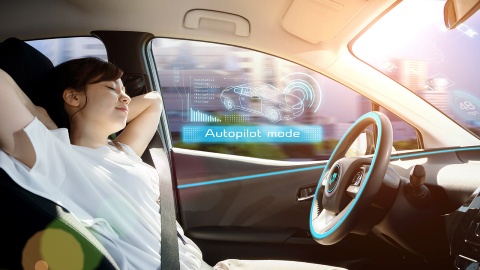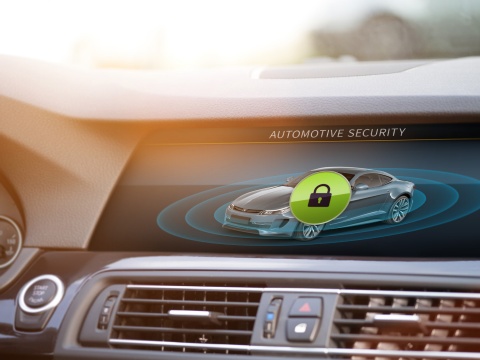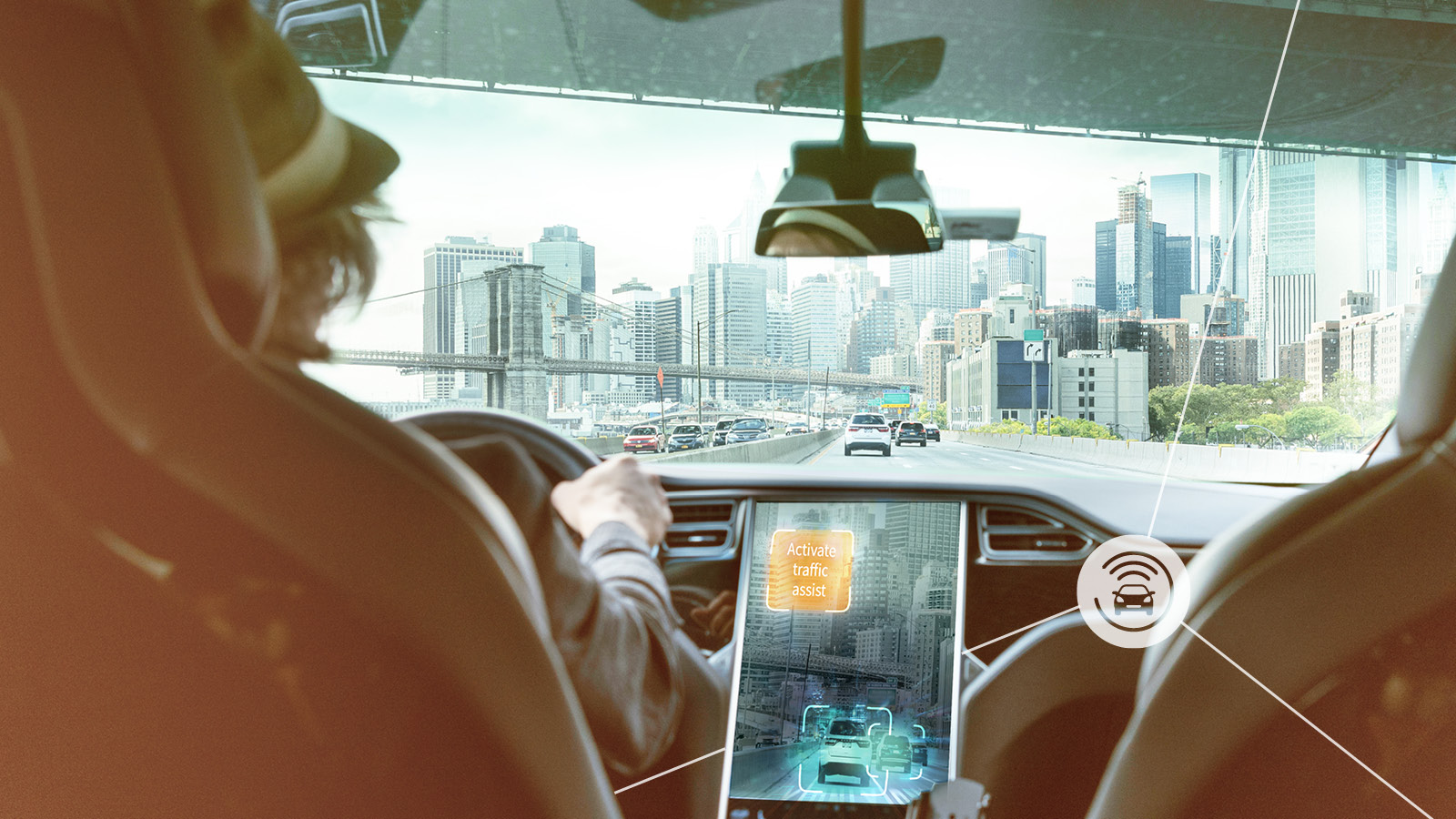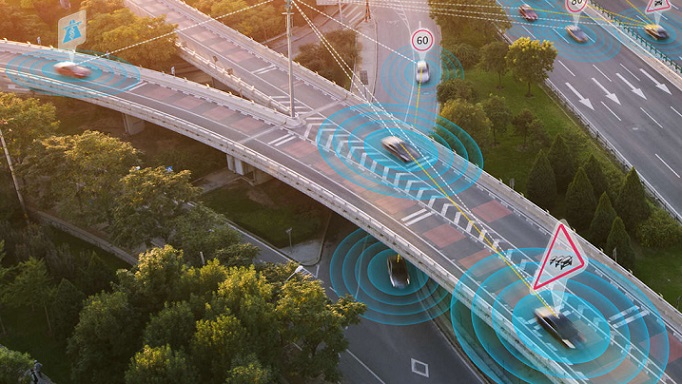
Benefits of automated driving
More and more people are moving to cities – and more and more goods are being transported on the roads. Self-driving cars and delivery vehicles are an answer to the challenges associated with urbanization and globalization.
Automated driving is often referred to as Advanced Driver Assistance Systems, also known as ADAS. It reduces traffic levels, cuts fuel consumption and emissions, and makes parking-related problems a thing of the past. Drivers of fully automated vehicles are also free to use travel time for other pursuits, such as relaxing, working, teleconferencing, online shopping, or reading the newspaper.
The electronic systems of a self-driving car are able to react far more quickly than humans, with a response time of 0.1 seconds as opposed to 1.4 seconds. Networking with other vehicles and infrastructure enables them to detect potentially hazardous situations much earlier and drive in a more anticipatory manner. McKinsey’s figures show that around 90 per cent of traffic accidents today can be traced back to driver error – and could be prevented by automated vehicles.
The first vehicles corresponding to automation level 3 on the six-level international classification system are already being introduced onto the market. Level 0 denotes a vehicle without any assistance systems.
The degree of automation increases through levels 1 to 4, with assistance systems taking over an increasing number of tasks from the driver. Level 5 represents full-scale automated driving, enabling driverless travel in all surroundings and in any situation. At this level, drivers are no longer required to control the vehicle at any time. Experts predict that the first self-driving cars featuring level 5 classification may be ready for series production by around 2025.

Enabler technologies of AD
In order for an automated vehicle to autonomously navigate through road traffic, it must feature a range of fundamental capabilities: It must be aware of its surroundings, use the collected information to draw the right conclusions, and act accordingly.
Awareness of surroundings
Autonomous vehicles are fitted with a variety of different sensors that enable them to detect their surroundings. Ultrasound sensors detect obstacles in situations such as parking. Radar sensors detect objects at great distances, measuring their speed and position in relation to the movement of the vehicle itself. Lidar sensors scan the surroundings with invisible laser light and generate a high-precision 3D image of the surroundings. Video sensors in the form of camera systems provide important visual information such as the color and texture of an object, known as image patterns. Each of these sensor systems provides specific advantages in its respective application area. However, it is only when information from the different sensors is combined – in a process known as sensor fusion – that a precise, almost complete, and reliable image of the surroundings is generated.
The communicative vehicle
This image of the surroundings of an automated vehicle can also be enhanced by means of information from other vehicles or the traffic infrastructure. The vehicle is also networked via a range of communication channels, from special automotive Wi-Fi to the 5G mobile network. Known as vehicle-to-X or V2X, this is a form of communication that enables the vehicle to receive traffic information from other vehicles, infrastructure, or traffic control systems and to use this for control purposes. In this way, the driver can receive warnings relating to hazardous situations such as accidents, black ice, broken down vehicles, and the tails of traffic jams along the route, even if these are not yet within the sensor range of the vehicle.
Making decisions intelligently
The task of processing the flood of data provided by the sensors demands the use of high performance microcontrollers and processors. These must be able to evaluate the various pieces of information in real time, where possible, while also meeting the highest safety-related standards and requirements – after all, their decisions are critical to the safe operation of the vehicle. Many experts also set great store by artificial intelligence in order to provide the vehicle with the opportunity to act in an intelligent manner independent of humans. Machine learning functions enable driverless cars to generate new knowledge from data that has been collected and prepared, constantly expanding their knowledge base. Without this independent learning, the challenge of programming defined logical reactions to all theoretically possible situations would be almost unimaginable.
Protection against hacker attacks
However, the increasing number of communication interfaces in the vehicle also means that there are additional potential gateways for cyberattacks. This requires protected communication channels, both within the vehicle itself and between the vehicle and the cloud (V2X). This is based on hardware trust anchors, which largely consist of protected keystores and hardware accelerators for cryptographic encryption operations. These are available in the form of hardware security modules (HSM) as an integral component of a microcontroller or in the form of separate (discrete) security modules.
Automotive Security
The future of mobility lies in connected cars. Tomorrow’s car will have full Internet access, support mesh communications with other vehicles and interact with the road infrastructure, offering a much more convenient, intuitive, user-centric driving experience.
However, as system complexity rises, so too does the volume of data being processed and shared. This increased level of communication within and beyond the car increases the risk of cyber-attacks. Manipulation and hacking attempts can compromise confidential information and even road safety.
As the global market leader in security microcontrollers for 15 consecutive years and with more than 40 years of experience in the automotive sector, Infineon is ideally positioned to tackle these growing security challenges. It offers the market’s broadest range of secure elements and microcontrollers with built-in security modules to prevent theft, forgery and tampering.

Safe functioning
However, the issue of ensuring safety is not limited to data – if human operators are unable to intervene in the event of a system malfunction, then the technology itself has to be particularly reliable. The corresponding requirements and procedures are summarized under the concept of functional safety, with the necessary methods in the development and production of road vehicles defined in ISO 26262. Semiconductors designed especially for use in automated driving functions form the basis for a functionally safe vehicle. They are not only particularly robust and reliable, they even monitor themselves in the course of data processing.

The five levels of increased automation
The driver is responsible for longitudinal guidance (maintaining speed, accelerating, braking) and lateral guidance (steering). There are no intervention systems, simply warning systems.
A system can either take over longitudinal or lateral guidance of the vehicle, while the driver permanently executes the other activity respectively.
The driver can hand over longitudinal and lateral guidance to the system in a specific application. The driver must always be in a position to immediately retake control of the vehicle.
The system identifies the system limits independently. The driver no longer has to permanently monitor the longitudinal and lateral guidance of the vehicle. However, the driver has to remain able to resume driving when prompted by the system with a specific buffer time.
The driver can hand over the full driving task to the system in specific applications (road type, speed zone, environmental conditions).
The vehicle can perform the driving task fully autonomously – on all road types, in all speed zones and under all environmental conditions.
Last update: December 2017





